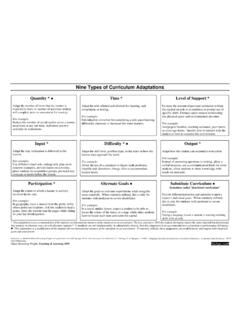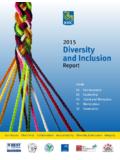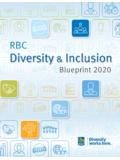Transcription of Inclusion Tool Kit - snipsf.org
1 Special Needs Inclusion Project Inclusion tool Kit For After School Programs Special Needs Inclusion Project Support for Families of Children with Disabilities 1663 Mission Street, 7th floor San Francisco CA 94103. Inclusion tool Kit Table of Contents Introduction .. 3. DCYF Minimum Standards for Inclusion .. 3. Special Needs Inclusion Project High Quality Standards .. 4. About The Special Needs Inclusion Project .. 6. 6. Welcoming All 7. Inclusion Is .. 8. Create a Welcoming Environment .. 8. Beyond Political Correctness .. 9. DCYF Minimum Inclusion Standards for Early Childhood and Out of School Time Programs .. 11. DCYF Minimum Standard: Practice of Inclusion .. 12. Americans with Disabilities Act (ADA) .. 13. When do you have to provide accommodations? .. 13. Preparing for the Inclusion Process .. 14. How to Determine Reasonable Accommodations.
2 14. Sample Accommodation Language for Registration 17. Engaging with Families to Develop Partnerships .. 18. Guidelines for Talking with Families .. 18. Interview Example .. 20. Sample Inclusion Plan .. 23. More Important Laws .. 27. Legal 28. Maintaining Confidentiality .. 31. Family Educational Rights and Privacy Act (FERPA) .. 31. Special Needs Inclusion Project High Quality Standards .. 40. High Quality Standard 1: Philosophy .. 41. Let Inclusion Show .. 42. Creating an Inclusive Environment .. 42. Sample Mission 43. Inclusion tool Kit Sample Inclusion Policy .. 43. Sample Policy, Mission and Vision Statement .. 43. Sample Inclusion Statements .. 44. High Quality Standard 2: Inclusion Strategies and Resources .. 45. Understanding Students' Strengths and Needs .. 46. Strengths & Strategies Profile .. 48. Adapting and Modifying Activities.
3 50. Strategies for Promoting Cooperative Interactions .. 51. Curriculum Adaption Flow Chart .. 53. Modifying Program 54. The Sports Page .. 55. High Quality Standard 3: Program Planning, Monitoring and Evaluation .. 59. Monitoring and Evaluating your Inclusion Program .. 60. Sample Parent Survey .. 61. Sample Organizational Review .. 62. High Quality Standard 4: Outreach .. 66. Outreach and Recruitment .. 67. San Francisco Community Resources for Children with Disabilities .. 69. Resources and Links .. 70. Inclusion .. 70. Information about Disabilities .. 70. Disability-Related Laws .. 71. Accessibility .. 72. Mission Statements and Policies .. 72. Special Needs Inclusion Project, March 2010 Page 2. Inclusion tool Kit Introduction The Inclusion tool Kit contains the information and practical strategies you need to create a nurturing and welcoming environment for all children in your after school program.
4 If you provide a service or program, we hope the tool Kit will help you provide programs in which all children can participate and belong. And if you are a family member we hope this tool Kit will provide you with resources to work with community program providers to include your child. The Inclusion tool Kit is organized around Inclusion standards which were developed by the Special Needs Inclusion Project (SNIP) Interagency Council. The Council was comprised of Jewish Vocational Services, KIDS Project, Community Alliance for Special Education (CASE), Hearing and Speech Center of Northern California, Support for Families of Children with Disabilities, Operation Access, Wu Yee Children's Services, Children's Council, and Child Care Law Center. The SNIP Council worked with DCYF. to develop minimum standards for the after school programs they fund.
5 DCYF has established standards for all of the programs they fund. The DCYF Minimum Compliance Standards establish a baseline for quality and serve as the foundation for monitoring and evaluating programs funded by DCYF. The Inclusion Standards are a subset of the Minimum Compliance Standards and provide a set of criteria for effective Inclusion with indicators agencies can use to ensure they are on the right track. Additionally, standards help providers communicate their values and hold themselves accountable for their programs. Youth and families can use standards as a reference when observing a program for the first time or to help them understand what to expect from a program as time goes on. The SNIP High Quality Standards are intended to educate the community as a whole about high-quality Inclusion programming and how it can be achieved.
6 DCYF Minimum Standards for Inclusion 1. Participation in Inclusion Training Program Representative participates in an Inclusion training provided by DCYF and/or its community partners on an annual basis. 2. Practice of Inclusion Program has a process for determining reasonable accommodations needed by children and youth with disabilities to participate in its activities. Indicator Program has a documented process for receiving and assessing requests for reasonable accommodations. Indicator Staff is aware of the legal requirements for providing reasonable accommodations. An explanation of the legal requirements for reasonable accommodation is included in new staff orientation. Annual staff development activities include training about reasonable accommodation. Special Needs Inclusion Project, March 2010 Page 3. Inclusion tool Kit Special Needs Inclusion Project High Quality Standards HQ1: Philosophy Agency has a formal Inclusion statement - philosophy, vision, mission, values, and goals which reflects a commitment to Inclusion .
7 Indicator : Agency's Inclusion statement is evident in written materials, such as annual reports, brochures and registration materials. HQ2: Inclusion Strategies and Resources Program has strategies and resources to ensure effective Inclusion for children/youth with special needs in its activities. Indicator : Staff and volunteers are trained and knowledgeable of inclusive practices. Examples: Staff participates in professional development focused on including children/youth with disabilities. Staff and volunteers show evidence of certification or significant experience working with individuals who have special needs. In-house staff development activities and volunteer training curriculum includes knowledge and skills related to inclusive practices. The agency hires an Inclusion facilitator to coach, guide and support staff.
8 Indicator : Staff identifies (formally or informally) strengths and interests of children and youth with disabilities and creates a plan for including them in program activities. Examples: Staff has a process to identify children's strengths and needs. Staff develops a written plan for including children and youth with disabilities in the program activities. Indicator : Staff creates activities and/or curriculum to include children/youth with special needs in program activities. Examples: Program has a curriculum binder where staff can find examples of modified activities and tips for including children/youth with special needs Staff and participants attend workshops to learn how to create inclusive activities. HQ3: Planning, Monitoring, Evaluation Program activities are planned, regularly monitored and evaluated using indicators of best practices for Inclusion .
9 Special Needs Inclusion Project, March 2010 Page 4. Inclusion tool Kit Indicator : The program's evaluation addresses inclusive practices. Examples: Program solicits feedback from families/youth to shape and strengthen its Inclusion efforts. Staff completes a formal self-evaluation or survey of their program's progress toward including children/youth with disabilities. Staff hold an interim and annual meeting to review inclusive practices Program evaluation results are used to plan and modify program activities to further the Inclusion of children/youth with special needs. Indicator : Staff reviews progress of individual children with disabilities enrolled in their program. Examples: The child/youth's written Inclusion plan includes a process for monitoring progress toward meeting his/her goals. Staff meet regularly to discuss the progress of children/youth with special needs and the extent to which they are effectively participating in the program HQ4: Outreach Program descriptions and outreach efforts encourage children/youth with special needs to participate in program activities.
10 Indicator : Program's written materials encourage children/youth with special needs to enroll. Examples: Outreach material, including flyers, brochures, reports, and websites state that children and youth with disabilities are welcome and are encouraged to apply. The agency publicizes its programs to agencies that serve children and youth with disabilities and their families such as: Special Needs Inclusion Project; Support for Families of Children with Disabilities; Community Alliance for Special Education; San Francisco Unified School District; Golden Gate Regional Center; Jewish Vocational Services; Hearing & Speech Center of Northern California; High Risk Infant Interagency Council; Improving Transition Outcomes Project; Childcare Planning and Advisory Council, BRIDGES Employment Program, Independent Living Resource Center, Janet Pomeroy Center; United Cerebral Palsy.








